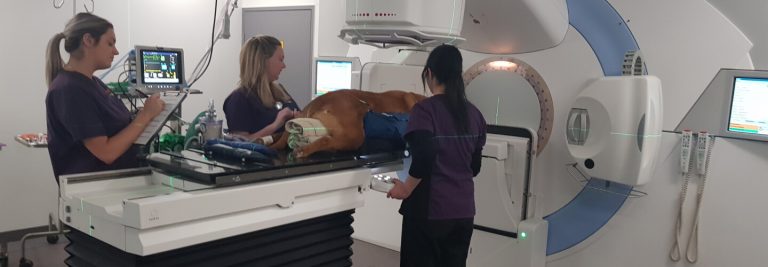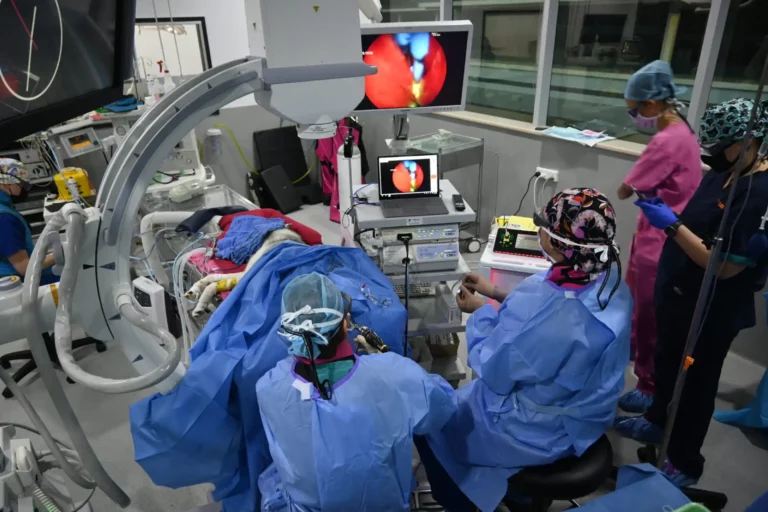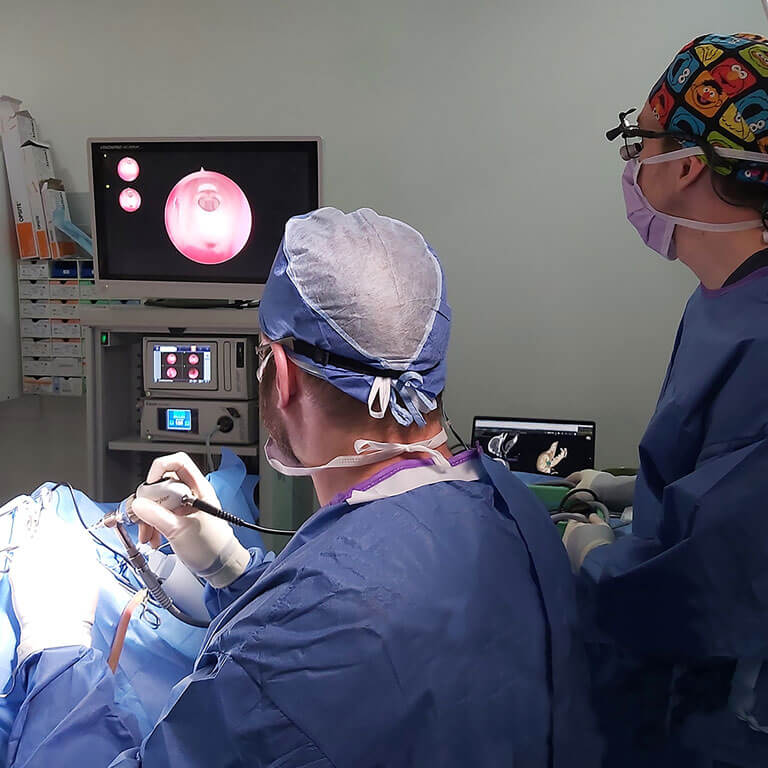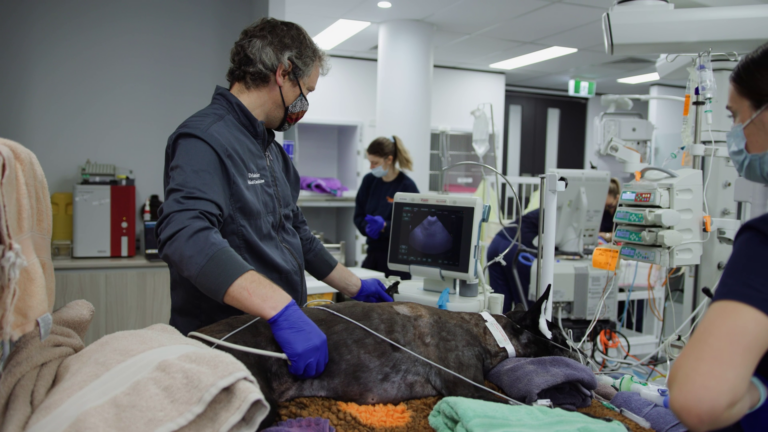Zimi’s cystoscopic-guided laser ablation
We first met Zimi, the pug when she was 6 months old. She was leaking urine (urinary incontinence), so her owners brought her to see the Internal Medicine team at SASH. Zimi was diagnosed with ectopic ureters.
Ureters are the tubes that carry urine from the kidney to the bladder. In Zimi’s case, instead of opening into the bladder like a normal dog, her ureters were tracking down the outside of the bladder wall opening directly into the urethra therefore bypassing the bladder (ectopic ureters) and causing her to constantly leak urine. Fortunately for Zimi, this could be corrected via a cystoscopic-guided laser ablation.
Cystoscopic-guided laser ablation is a minimally invasive procedure, common in human medicine, but performed by very few veterinary specialists in Australia. This minimally invasive procedure means no scalpels, no sutures, and a quicker recovery. We’re fortunate to have Internal Medicine Specialist, Dr Lucy Kopecny, Australia’s only veterinarian with a two-year fellowship in nephrology, interventional endourology and extracorporeal therapies from the University of California at Davis.
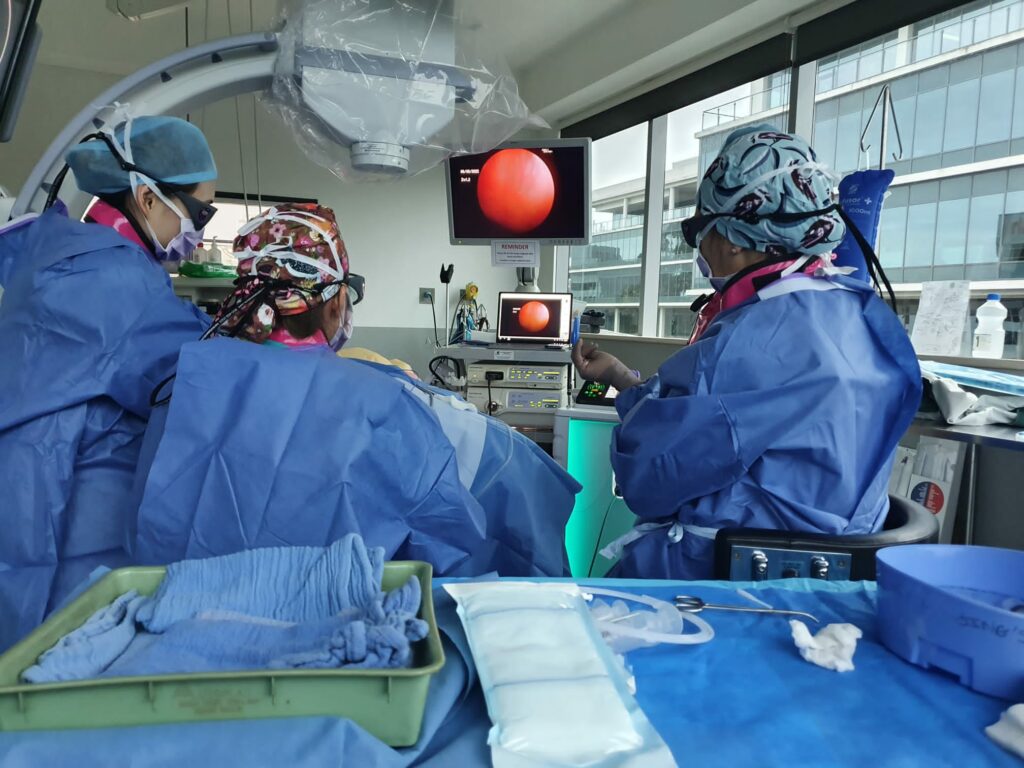
Zimi had her ectopic ureters corrected by Dr Lucy Kopecny and Specialist Surgeon, Dr Julia Sumner with Cystoscopic-guided Laser Ablation. A small scope with a camera and laser tip was inserted into Zimi’s bladder (via her urethra), with fluoroscopic (live x-ray) guidance, to ablate and correct her ectopic ureters. This procedure ensured Zimi’s ureters were now correctly connected to her bladder.
Zimi recovered well and in true Pug style, was oblivious that anything had even happened. Zimi went home the same day, and she is no longer leaking urine!
SASH North Ryde, through the Bladder & Kidney Centre, offers a non-surgical and minimally invasive procedure for ectopic ureters which can definitively diagnose and treat the condition simultaneously under a single general anaesthetic. Known as cystoscopy and laser ablation, a tiny camera is placed into the urethra (the body’s external opening) to visualise the malformation of the ureter. A laser is then used to create a correct opening from the ureter into the bladder in a normal anatomic position.
Our Internal Medicine Specialists are experts in diagnosing and treating urinary incontinence. Click here to make an appointment to see our Internal Medicine team, no referral is required.
